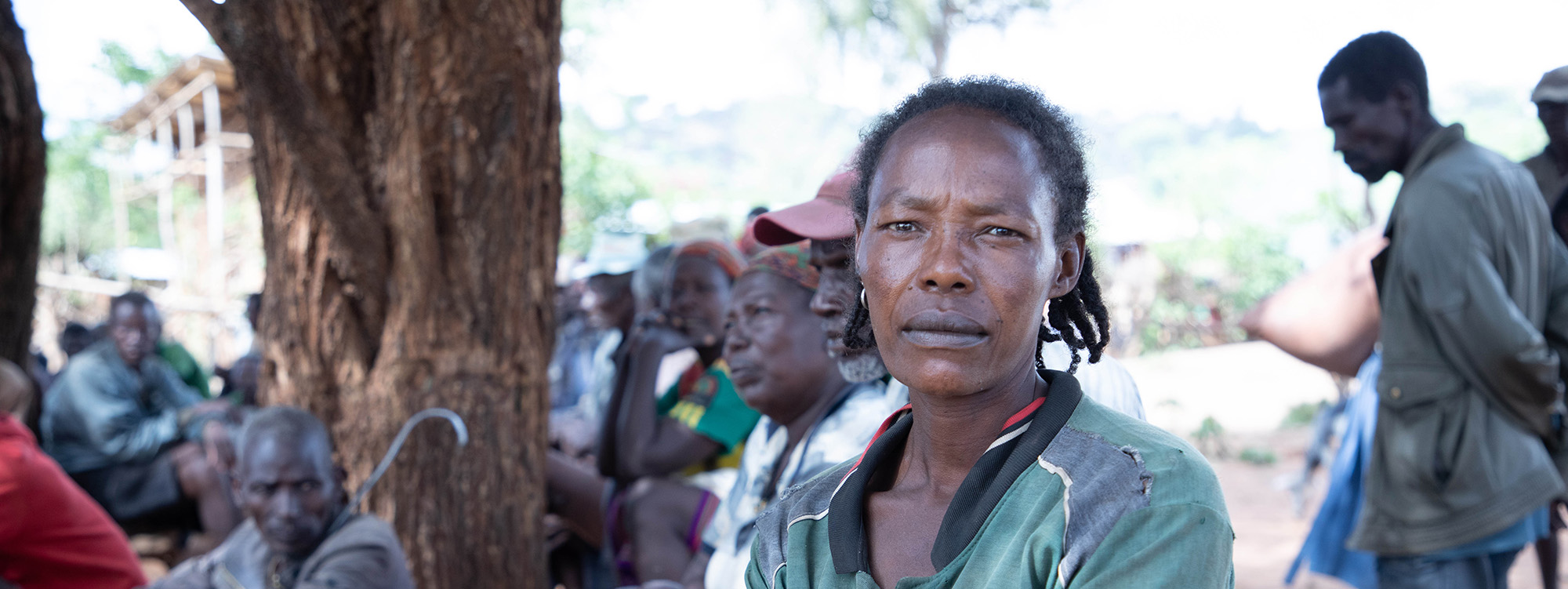In 2022, we saw what could happen when the international community comes together in solidarity. The war in Ukraine grabbed everyone’s attention, and for good reason – it was the fastest displacement crisis since WW2 and has uprooted nearly 14 million people from their homes.
However, the response to Ukraine made the silence surrounding other crises deafening. In 2023, let’s give all crises the attention they deserve. Here are 6 forgotten crises that you need to know about.
1. Horn of Africa
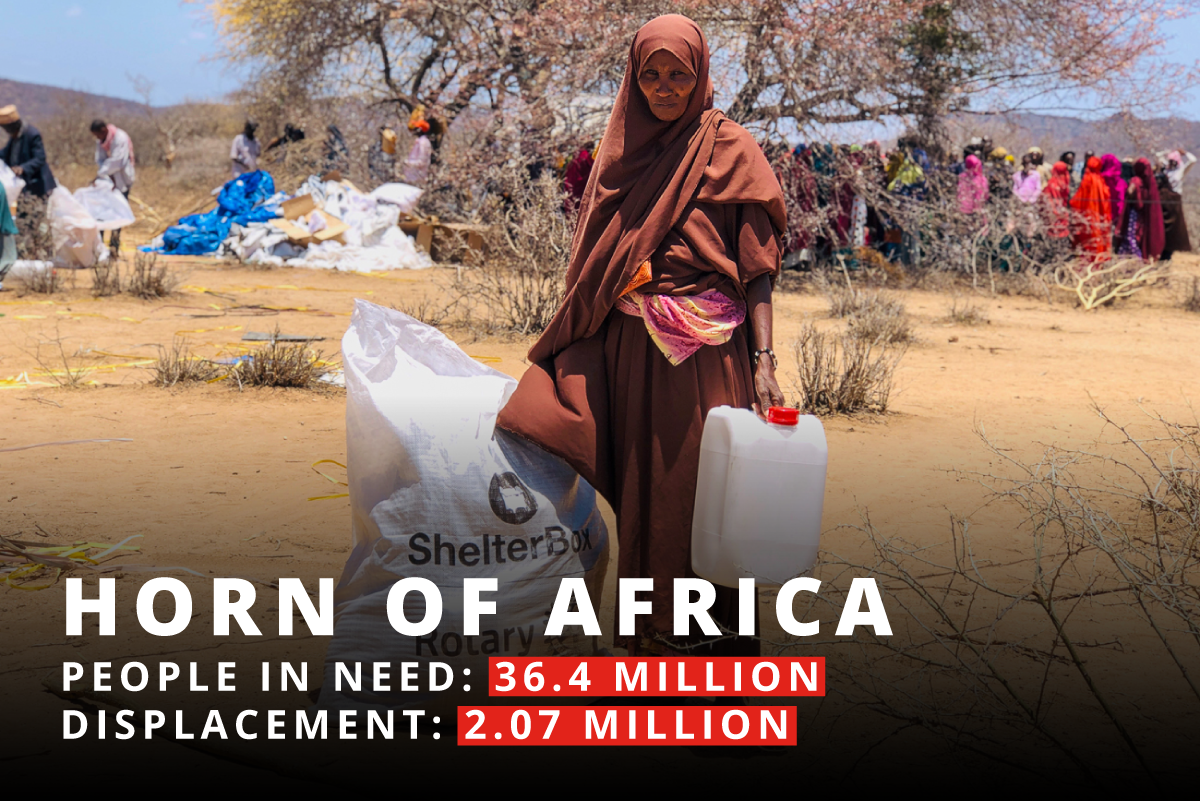
Ethiopia, Somalia and Kenya are in the midst of a fifth consecutive failed rainy season, which has led to a catastrophic drought.
Families are taking desperate measures to survive, and are leaving their homes in search of food, water, and new livelihoods. While some are able to find new homes in nearby towns, many end up in displacement camps where shelter needs are often unmet.
How is ShelterBox helping:
ShelterBox is working with IOM Ethiopia to provide emergency shelter to some of the most vulnerable families impacted by the drought. Our work will include two projects spanning across Ethiopia and Somalia.
2. Yemen
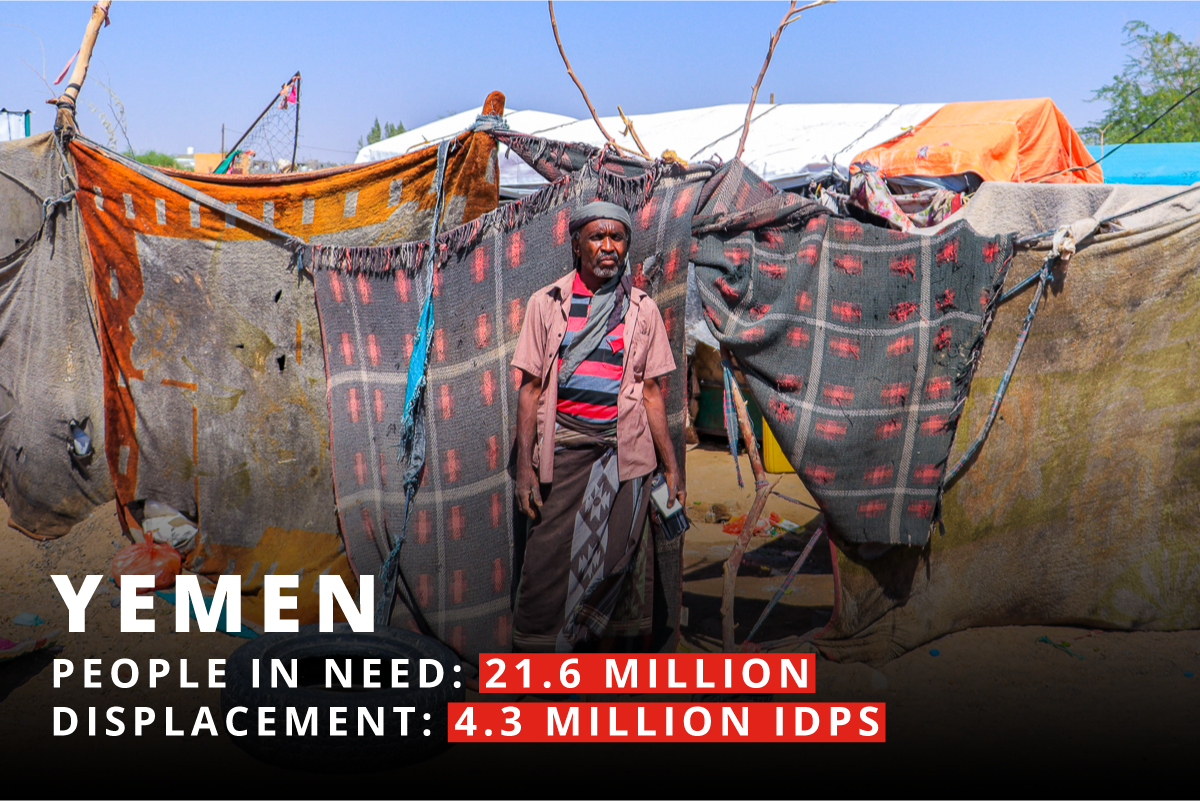
In March, Yemen will be entering its ninth year of war.
The conflict has left millions without a place to call home, destroyed the economy, and disrupted basic services. It’s estimated that over 80% of the population lives below the poverty line. Displaced families are often forced to live in overcrowded shelters or live in “nests” – makeshift shelters made from scrap materials like plastic, branches, and bits of cloth.
How is ShelterBox helping?
We have partnered with BCHR (Benevolence Coalition for Humanitarian Relief) to support vulnerable communities in Marib, which hosts the largest population of internally displaced people in the country. We are providing families with much needed household items, and most importantly, shelters known as ‘Iron Nets.’ These structures are more durable and provide better protection against flooding and fire.
3. Syria
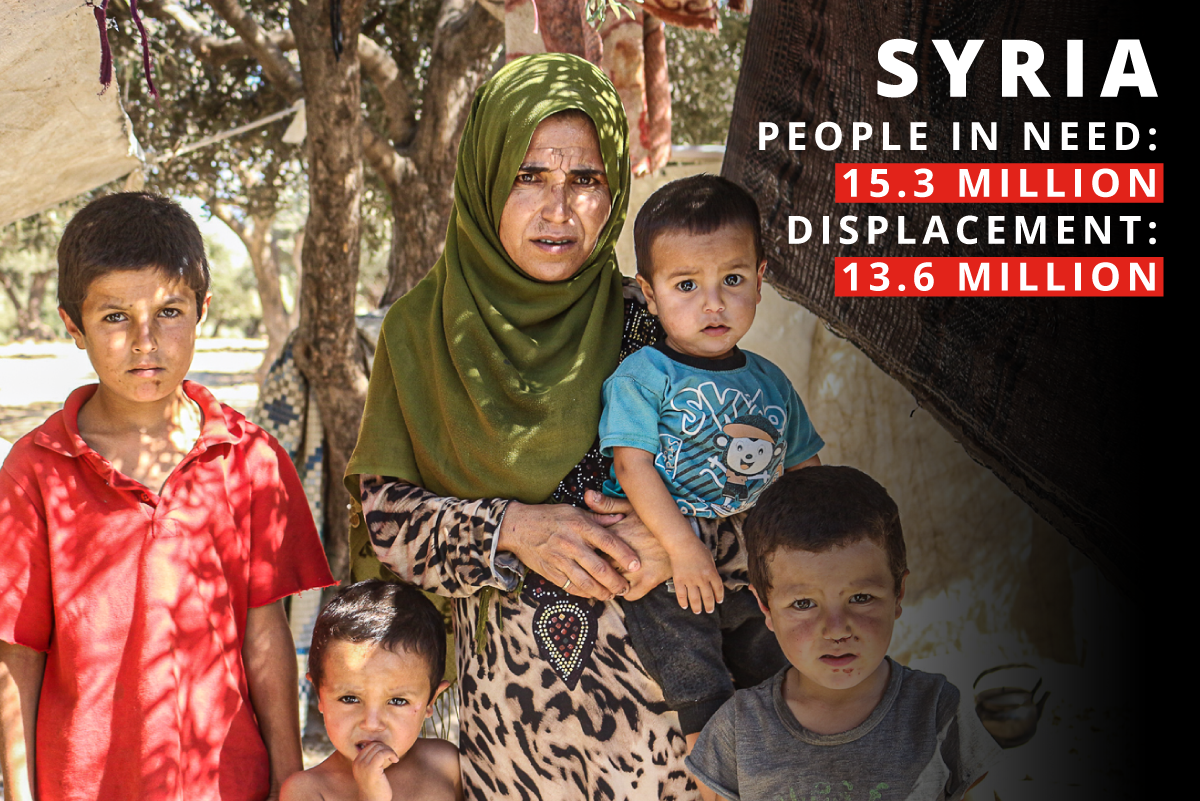
After nearly 12 years of conflict, the situation in Syria is dire.
The country has the largest number of internally displaced people in the world, the economy is deteriorating, and basic services have collapsed. Millions of children have grown up knowing nothing except conflict. Families living in displacement camps must also contend with extreme weather and yearly flooding, which destroys their tents and belongings
How is ShelterBox helping?
We have been responding to the Syrian conflict since 2012, making it ShelterBox’s most sustained and largest response. Working with in-country partners, we provide shelter materials, household items, and winter clothing to the most vulnerable people across camps in the northwest and northeast of the country.
4. Cameroon
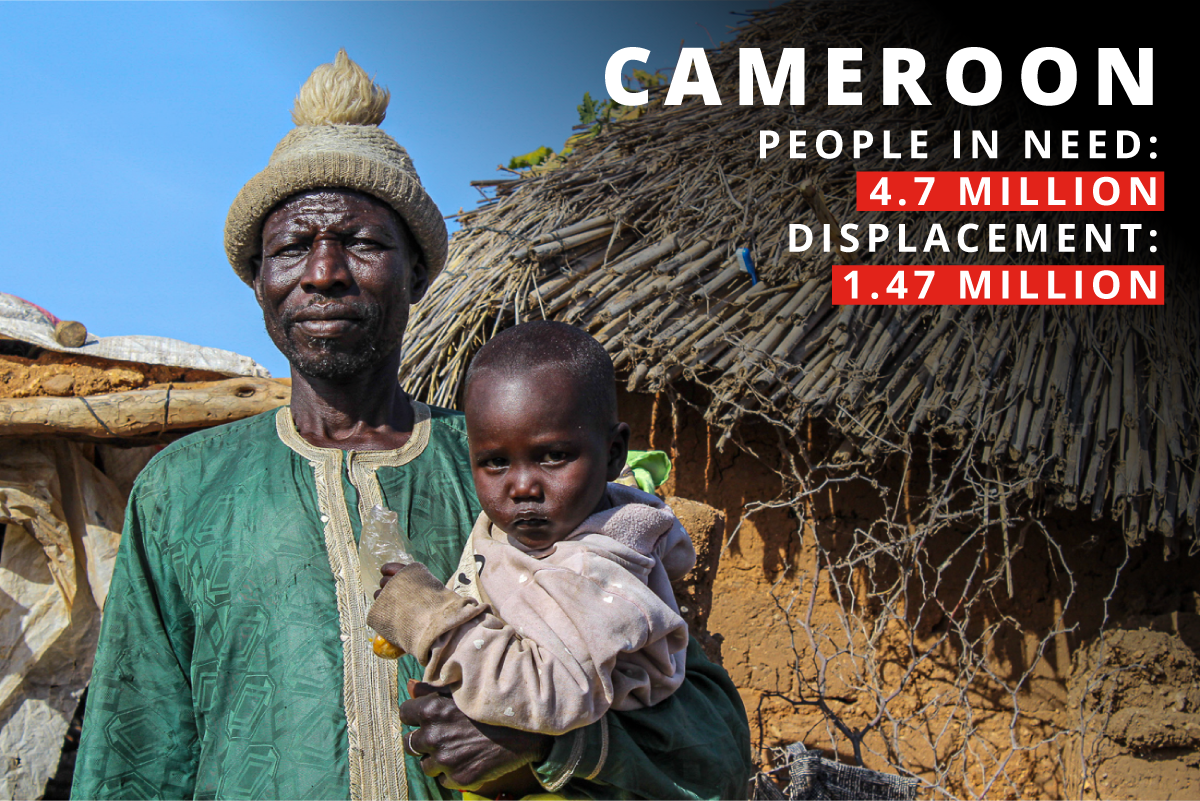
Cameroon is fighting three separate humanitarian crises.
In the Far North, violence, kidnappings, and explosive devices have displaced thousands. In the North-West and South-West, six years of conflict have been witness to violent incidents and human rights violations. And in the eastern regions, refugees from the Central African Republic are putting pressure on the areas already scarce resources. Across the country, violence, intercommunal conflicts, disasters, and epidemics have pushed 1.47 million from their homes.
How is ShelterBox helping?
ShelterBox is providing emergency shelter to families living in Minawao refugee camp in the Far North region of Cameroon. We are one of the only providers of shelter in the camp, which is home to nearly 75,000 refugees. We are also supporting families outside of the camp who have been forced from their homes due to violence, climate change and economic pressures.
5. Mozambique
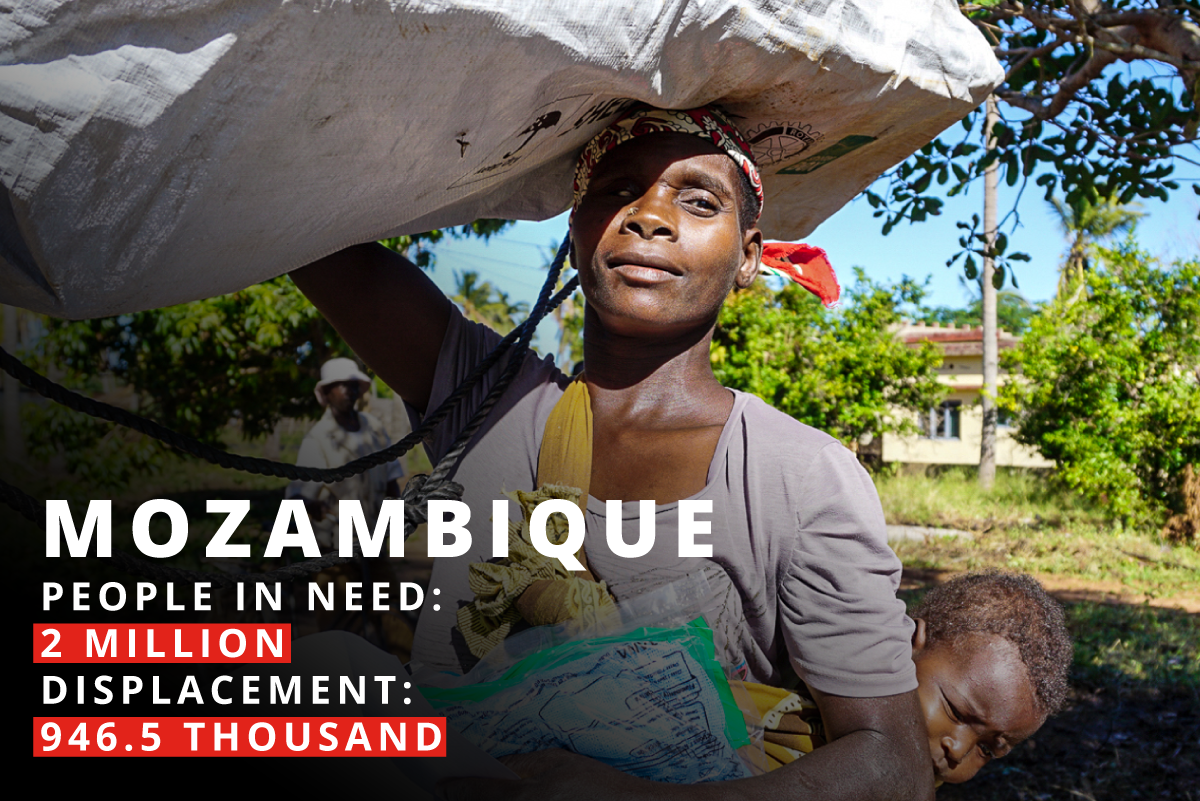
Since 2017, an armed group known as Al-Shabab has been attacking civilians in the Mozambican province of Cabo Delgado.
In the summer of 2022, the violence spread south into the neighbouring Nampula Province which led to a significant increase in displacement. In turn, the need for emergency shelter has skyrocketed. Displacement camps are overcrowded and many displaced families are sleeping outdoors where they are exposed to harsh weather and disease.
How is ShelterBox helping?
We are supporting vulnerable communities with shelter kits, solar lights, kitchen sets, sleeping mats, and mosquito nets, with help from our partner CARE Mozambique. Our priority in Mozambique is to reach people who haven’t received any shelter assistance so far, and families who been living in resettlement sites for over 6 months.
6. Burkina Faso
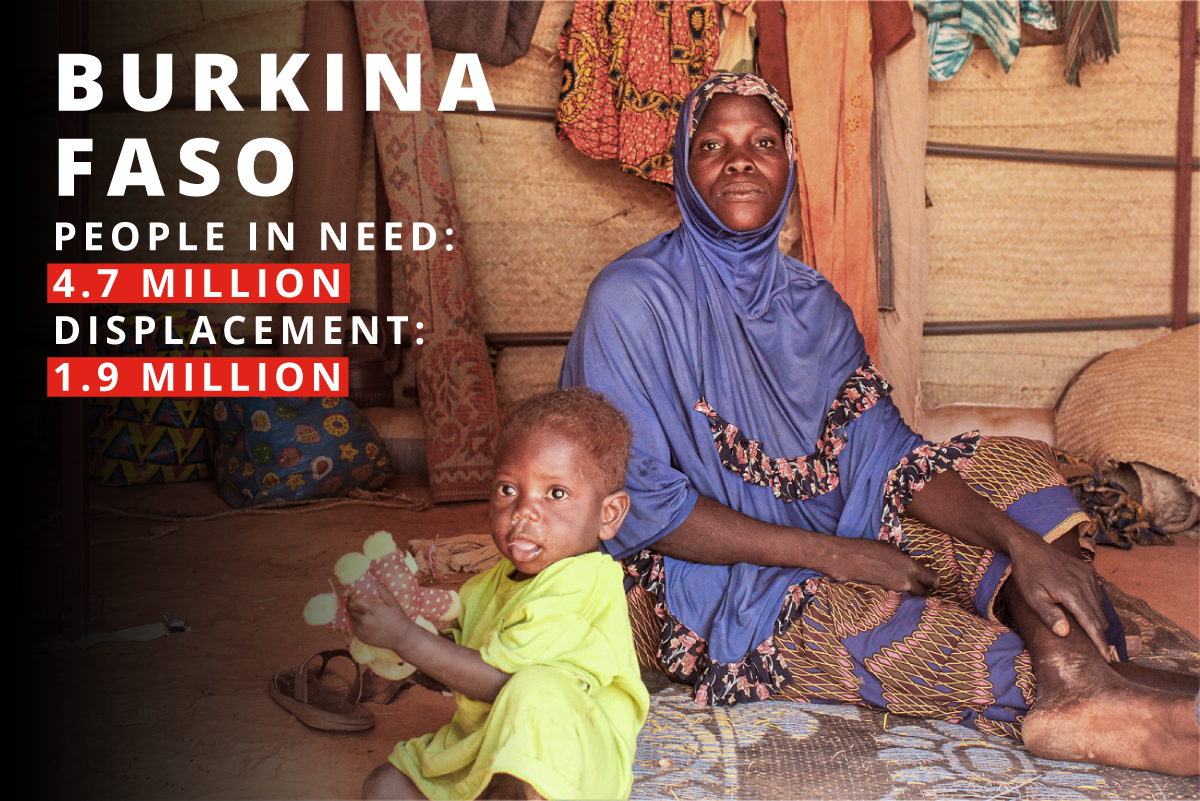
The central Sahel region, which includes the countries of Burkina Faso, Mali and Niger, is facing one of the fastest-growing displacement crises in the world.
However, since 2020, Burkina Faso has become the epicentre of armed violence and more 68% of the displaced population in the Sahel comes from Burkina Faso. Attacks against innocent civilians occur almost daily across the entire country, resulting in loss of life and psychological damage.
How is ShelterBox helping?
The insecurity and instability make it difficult for aid workers to reach some of the people in need, and a lack of resources is further hampering aid efforts. Despite these challenges, we have been working with our partner HELP to support the most vulnerable communities with durable shelters and household items.

